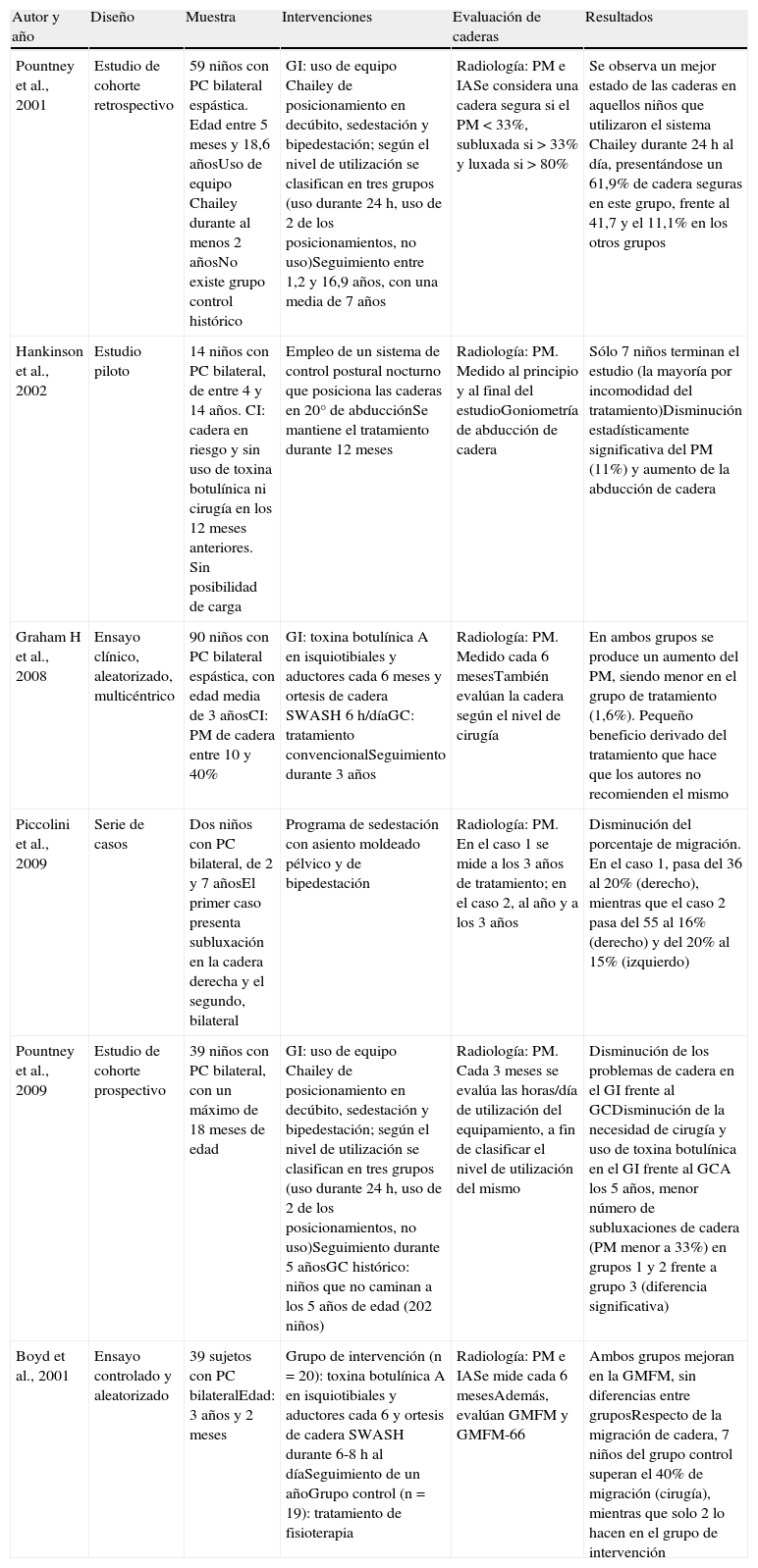El objetivo de la presente revisión es determinar la efectividad de los sistemas de control postural en el manejo de las deformidades de caderas en sujetos con parálisis cerebral.
Para ello, se ha realizado una búsqueda bibliográfica en Medline, Ovid y Pedro. Se han incluido artículos que con una antigüedad máxima de 15 años, donde la población de estudio fuesen sujetos menores de 18 años con diagnóstico de parálisis cerebral. Las intervenciones incluían sistemas para el control postural cuyo objetivo fuese controlar y/o disminuir la deformidad a nivel de la cadera, evaluado a través del porcentaje de migración de la cabeza femoral.
De los 22 artículos potencialmente válidos se incluyeron un total de 6. Aunque existe una falta de homogeneidad en los estudios, sí parece claro que el empleo de estos sistemas permite controlar la deformidad de cadera. Para ello, es necesario un empleo prolongado del mismo en el tiempo, por encima de los 2 o 3 años, exigiéndose, además, una utilización mínima de 5 a 6h diarias. También destaca la necesidad de que las intervenciones sean lo más precoces posibles, ya que las posibilidades de éxito son mayores cuando el grado de deformidad es menor. Sin embargo, se hace necesario aumentar el número y la calidad de publicaciones.
The aim of the present review is to determine the efficiency of postural control systems in management of hip deformities in subjects with cerebral palsy.
A review of the bibliography was made using Medline, Ovid and PEDro databases. Those article having a maximum antiquity of 15 years and in which the study population consisted of subjects under 18-years with a diagnosis of cerebral palsy were included. The interventions included systems for postural control whose purpose was to control and/or diminish the deformity on the hip level, this being evaluated according to the percentage of femoral head migration.
Six out of 22 potentially valid articles were included. Although the studies lack homogeneity, it seems to be clear that the use of these systems makes it possible to control hip deformities. To do so, extended use of a period greater than two or three years as well as minimal usage of 5 to 6hours daily is necessary. The need for the interventions to begin as early as possible also stands out since the possibilities of success are greater when the degree of deformity is minor. Nevertheless, the number and the quality of the publications needs to be increased.
Artículo
Si ya tiene sus datos de acceso, clique aquí.
Si olvidó su clave de acceso puede recuperarla clicando aquí y seleccionando la opción "He olvidado mi contraseña".Comprando el artículo el PDF del mismo podrá ser descargado
Precio 19,34 €
Comprar ahora








